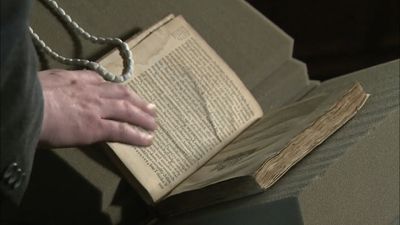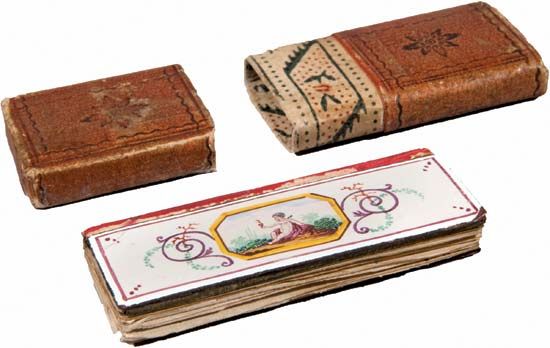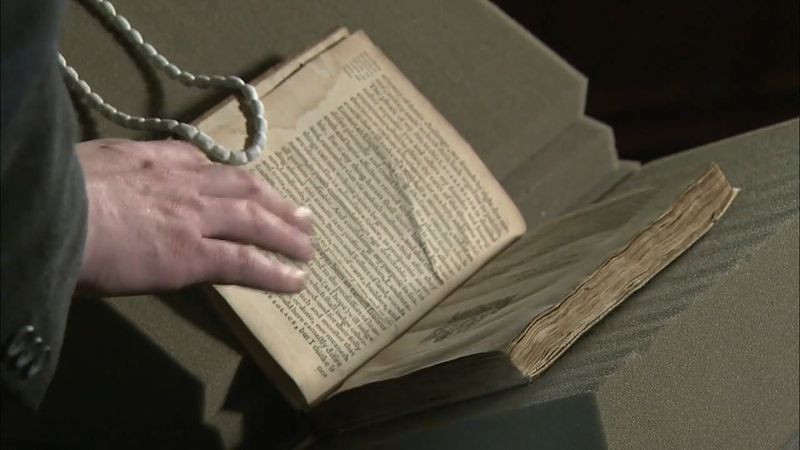book collecting
Our editors will review what you’ve submitted and determine whether to revise the article.
- Related Topics:
- library
- book
- bookplate
- author collection
- subject collection
Recent News
book collecting, acquisition of books, not only as texts but also as objects desirable for such qualities as their age, scarcity, historical significance, value, beauty, and evidence of association with some important person. Exercising knowledge, taste, and critical judgment, the book collector forms a special kind of library, intended not only for reference, current reading, or entertainment but also for comprehensiveness and quality within the areas it covers. Although such a library may (and often does) exist simply for the collector’s own pleasure, the very private and personal activity of book collecting may have significant public benefits.
Notable collections
Private collections have provided the cornerstones of many of the world’s great libraries. The University of Oxford’s famous library, for example, bears the name of its benefactor, Sir Thomas Bodley (see Bodleian Library), and the collection formed by Charles V, king of France in the 14th century, lies at the heart of the Bibliothèque Nationale de France. At the University of Manchester the John Rylands University Library contains the extensive collection of early European printing amassed by Lord Spencer (George John, 2nd Earl Spencer), as well as professor Richard Copley Christie’s important collection of 15th- and 16th-century publications. In Washington, D.C., the Folger Shakespeare Library represents the life’s work of American industrialist and collector Henry Clay Folger and his wife, Emily Jordan Folger.
The catalog of an exceptional collection may serve as the bibliography of a particular genre: the four-volume catalog of the exceptionally rich and complete library of illustrated (colour-plate) books assembled by John Roland Abbey is a case in point. And, of course, there are thousands of other, smaller book collections supporting research in libraries throughout the world, each originally the passionate interest of an individual collector.
Only in relatively recent times have governments and institutions assumed some of the functions of preservation. Through the efforts of book collectors, basic sources of history and priceless monuments of art and literature have survived that might otherwise have been irretrievably lost. Book collecting in its highest form is inevitably bound up with reverence for the past achievements of the human mind.
Early development
Although book collecting is certainly as old as the book itself, early references to it (as distinct from the acquisition of books for purely utilitarian purposes) are uncommon and can be misleading. The ancient Chinese term shanben (now generally translated as “rare books”) expresses an appreciation of the book as object reaching deeply into Chinese culture and history. In its original use the term seems to have referred specifically to books that had been carefully collated and checked for accuracy, and only gradually did the meaning of the term also encompass fine editions. There appear to have been Chinese collectors during the Song dynasty (960–1279) interested in books printed by renowned publishers, copied in manuscript by famous scholars, or annotated by celebrities. The papyri of Egypt and the scrolls of ancient Greece and Rome predated the book in codex form, and there were notable collections at many places in the ancient world—Ephesus, Alexandria, Antioch, Constantinople, and Rome, to name a few. All these collections were scattered in ancient times, and they are known only through surviving accounts. In the West beautifully written and decorated manuscripts of the Greek and Roman classics were produced, and presumably collected, in antiquity. The Greek historian Xenophon, writing in the 4th century bc, related an anecdote in which Socrates criticized a wealthy young man for seeking to outdo his friends in collecting the works of celebrated poets and philosophers, and in the 1st century ad the Roman philosopher Lucius Annaeus Seneca deplored the ostentatious accumulation of books that were seldom read. Reverence for the Qurʾān encouraged from the 7th century ad an appreciation in Islamic countries for books, writing, and education. The initial emphasis was on books as useful tools: although the 40-year search undertaken by Persian scientist al-Bīrūnī in locating the Book of Mysteries by Mani, founder of the Manachean religion, is sometimes cited as an example of bibliophilic zeal, it was more likely a case of Bīrūnī’s extreme scholarly perseverance. Books may also be regarded as artifacts and documents in the history of the graphic arts. For example, the proscription of images of human and animal forms in Islamic art helped foster the early development of calligraphy and fine binding, creating a class of objects that were collected and appreciated on aesthetic grounds.
Origins of contemporary collecting
Even though some of the elements of modern book collecting—a supply of fine books, book acquisition as a competitive and prestigious activity, appreciation for the book as object—existed in the ancient world, books were scarce and expensive handmade items, and collecting was necessarily restricted to a very few wealthy individuals. This remained largely true throughout the Middle Ages, although references to the collecting of books as objects proliferate toward the end of the manuscript era (from the 14th to the 15th century), as literacy rates rose and manuscripts became more common: in his Philobiblon (completed and first circulated in manuscript form in 1344, first printed in 1473; “The Love of Books,” Eng. trans. Philobiblon), English bishop and bibliophile Richard de Bury eloquently defended the expense of time, money, and attention on books, his goal being not only the pursuit of learning but also the appreciation of books as the physical receptacles of knowledge; the 13th-century Muslim geographer Yāqūt al-Ḥamawī al-Rūmī is known to have donated his extensive library to a mosque in Baghdad in order to ensure its preservation; and Federico da Montefeltro, 1st duke of Urbino, is remembered both for his library of beautiful manuscript volumes and for his famous distaste for the then-new art of printing (see Montefeltro Family).
In fact, it may be argued that the modern activity of book collecting is largely a product of the printing press. Printing was first developed in Asia, perhaps in the 6th century. The Chinese were known to have produced multiple copies of books by means of carved woodblocks as early as the 7th century; in Korea experiments in printing with non-lead metal type occurred as early as 1232; and Japanese publishers were issuing large illustrated editions of Ise monogatari (c. 980; Tales of Ise) and other sagas in wooden movable type by the late 16th century. In the West Johannes Gutenberg’s independent invention of printing with movable metal types (c. 1450) allowed the creation of editions of hundreds of more-or-less identical copies, at prices well within the means of the developing European middle class. East or West, as printed books entered the second-hand trade, collectors could for the first time compete for the same desirable objects whose value tended to increase over the centuries as their reputation and “collectibility” grew.
Uniquely in the West, however, the invention of printing, supported by other economic, social, and intellectual developments, appears to have encouraged book collecting on a scale unparalleled in other cultures. One of the most famous early collectors of printed books was Jean Grolier de Servières, vicomte d’Aguisy, French royal counselor and treasurer-general of France. Grolier commissioned fine books from Aldus Manutius the Elder, founder of the Aldine Press and the foremost editor, printer, typographer, and publisher of the Italian Renaissance. Grolier’s library, comprising more than 3,000 volumes, was noted for sumptuous gilt and painted bindings, many stamped with his generous motto “Ioannis Grolierii et amicorum” (“For use by Jean Grolier and his friends”).













